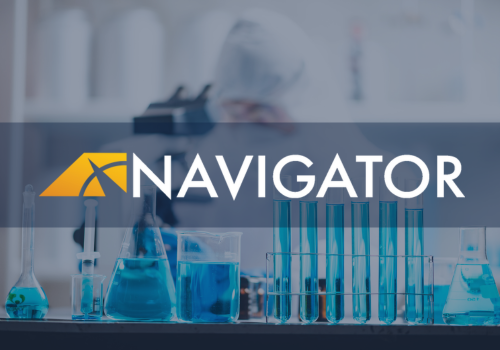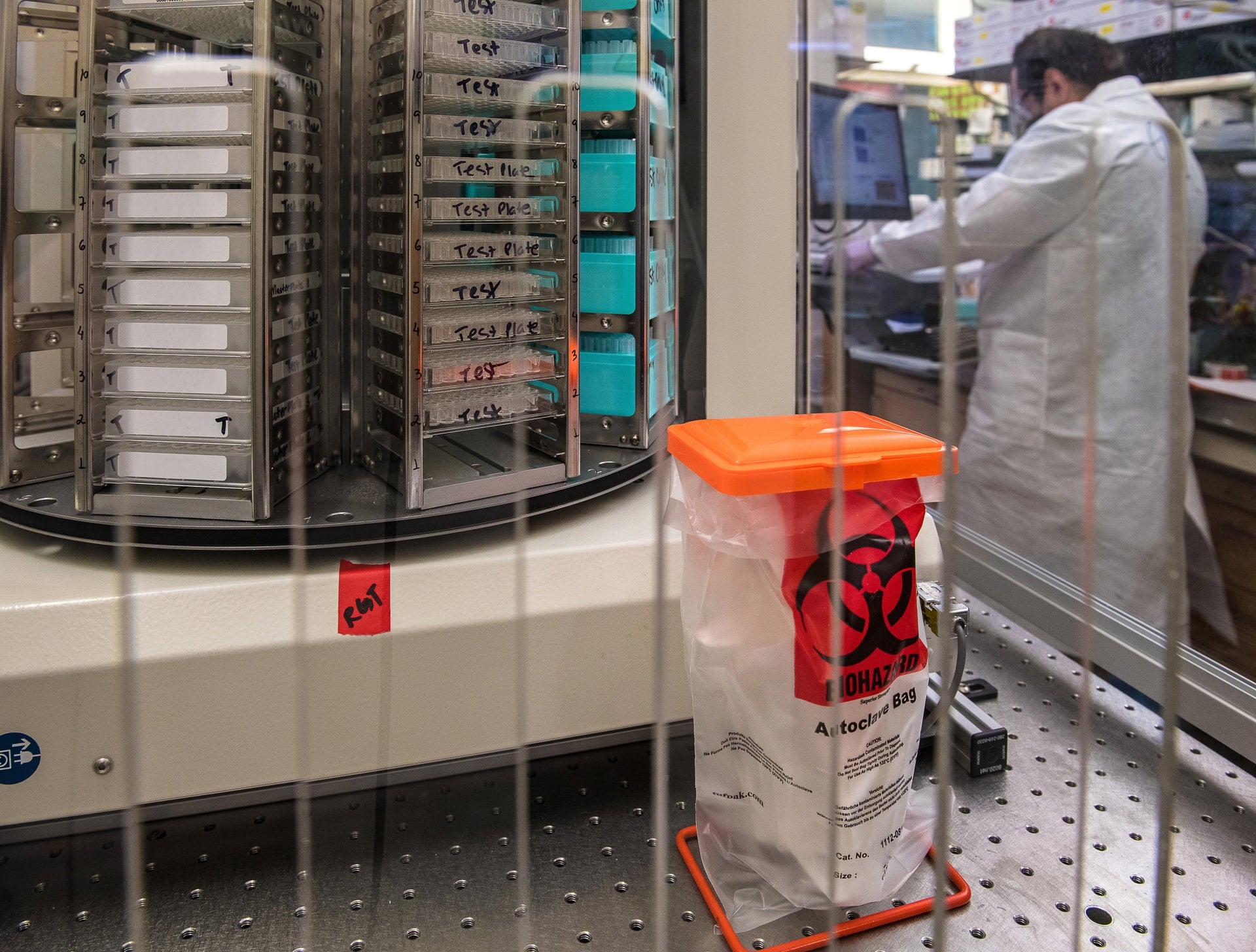The pharmaceutical industry is one of the most heavily regulated industries due to the implications product quality has on public health. Automation and optimization of key processes such as manufacturing, supply chain, etc., help companies enhance their productivity while maintaining high-quality standards. Life science ERP solutions are now embedded with added functionalities to take care of quality control and regulatory requirements.
For example, software tools are now available to ensure SOX compliance in the pharmaceutical industry. Along with maintaining regulatory requirements, life science ERP solutions also enable focusing on vital aspects of a pharmaceutical supply chain. The backbone of the pharmaceutical supply chain is traceability. To understand why traceability is important in pharma, check out our article at the previous link.
Amongst the various regulations that the pharmaceutical industry is under, GMP guidelines optimize and evaluate the manufacturing process. Let’s look at these guidelines in further detail.
What Is GMP?
Good Manufacturing Practices (GMP) is that part of quality assurance that ensures that the products are consistently manufactured and controlled to the quality standards appropriate to their intended use. They are a set of principles and procedures that, when followed by manufacturers for therapeutic goods, help maintain the required quality of the products.
The most important tenet of GMP is that quality cannot be tested into a batch of products but must be built into each batch of products during all the stages of the manufacturing process. The guidelines are designed to minimize the risks involved in any pharmaceutical production that cannot be eliminated through testing the final product.
Some of the main risks that GMP helps companies mitigate are,
- Unexpected contaminations of products, cause damage to health or even death.
- Incorrect labels on containers could sometimes lead to harmful formulations or delivery of the wrong medicines to the patients.
- Insufficient or too high of a number of active ingredients, resulting in ineffective treatment or adverse effects.
The purpose of these regulations is to protect the public health by ensuring that drug products are manufactured in a consistent and controlled manner, using quality materials, and following established and validated procedures. Additional goals of CGMP include preventing product contamination, mixture, and incorrect labeling or packaging, and to promote quality control throughout the entire drug manufacturing process.
Good Manufacturing Practice Guidelines in the Code of Federal Regulations
The CFR includes several sections germane to current Good Manufacturing Practices. As of this writing, those sections include:
21 CFR Part 314 sets the regulatory requirements for the premarket application process for new drug products in the United States. This regulation requires that a drug manufacturer demonstrate to the FDA that its new drug products are safe and effective through a rigorous scientific and regulatory process. As part of this process, the FDA assesses the manufacturer's compliance with Current Good Manufacturing Practice (CGMP) regulations, which help ensure the quality and purity of drug products. 21 CFR Part 314 plays a crucial role in ensuring that drug products are manufactured in compliance with CGMP regulations, and that they are safe and effective for their intended use.
21 CFR Part 210 along with parts 211, 225, and 226, establishes the minimum standards for the methods and facilities used in drug manufacturing to ensure the safety, identity, strength, quality, and purity of drugs. The regulations in Part 210 require that drug manufacturers comply with written procedures for production and process controls, and maintain records documenting the performance of their operations. Owners and operators of establishments engaged in the processing, storage, labeling, packaging, or distribution of human cells, tissues, and cellular and tissue-based products (HCT/Ps) must comply with both Part 210 and the applicable regulations in Part 1271. Failure to comply with any of these regulations can result in regulatory action, including product adulteration and penalties for the responsible party.
21 CFR Part 211 lays out the Current Good Manufacturing Practice (CGMP) regulations for finished pharmaceuticals. These regulations are designed to ensure that all drug products are of high quality and safe for use. 21 CFR Part 210 also establishes requirements for processes such as product design, production, packaging, labeling, storage, and distribution. It also covers the general principles of CGMP, such as the need for written procedures, record-keeping, and personnel training.
21 CFR Part 600 sets the standards for the Current Good Manufacturing Practice (CGMP) regulations for biological products, including vaccines, blood and blood components, allergenic extracts, and therapeutic serums. These regulations are critical to ensuring that these products are safe for use, free of contaminants, and able to maintain their potency and effectiveness throughout the entire production process.
Principles Of GMP
GMP, as stated above, is a set of guidelines including basic control measures and procedures to be followed, to meet the standard specifications of products that are safe for human use. These regulations address different areas including cleanliness, personnel qualifications, and record keeping. Following are 10 basic principles which need to be addressed to follow good manufacturing practices.
Principle 1: of cGMP Step By Step Written Procedures
All operating procedures and work instructions should be written down as standard operating procedures, and made available to all the employees to better understand the facility's workflows. The written procedures should be concise and logical so that they are easy to understand and follow.
Principle 2: Follow Procedures
It is critical that all the SOPs and written procedures are appropriately followed without any deviations to ensure a controlled and consistent performance.
Principle 3: Document Work
Prompt and accurate documentation serves as a record that helps maintain compliance and traceability. In case of an error, these records serve as the basis of investigation.
Principle 4: Validate Work
Establishing documentary evidence of the products, processes, and procedures enables their validation at each stage of manufacturing.
Principle 5: Integrate Productivity, Quality, And Safety Into Facilities And Equipment
The company facility should be constructed and designed in a way so as to reinforce the goals of quality, consistency, and minimization of errors at all stages of production.
Principle 6: Maintain Facilities And Equipment
Proper maintenance of equipment and the facility with valid documentation minimizes any safety concerns and helps avoid potential issues relating to contamination and quality control.
Principle 7: Define, Develop, And Demonstrate Job Competency
Capacity building of the employees through training on theory and practice of GMP as well as role-related training must be carried out. Appropriate training enables employees to demonstrate job competence by producing quality products in a safe and efficient manner.
Principle 8: Make Cleanliness a Daily Habit
Incorporating cleanliness, good hygiene, and a strict regime for sanitization ensures the protection of the product from contamination.
Principle 9: Build Quality Into The Product
Every step of the product life cycle should have effective controls such as control components, controlling the manufacturing process, packaging and labeling controls, and holding and distribution controls. These controls at different levels of manufacturing affect the final quality of the product.
Principle 10: Conduct Compliance And Performance Audits
The only way to evaluate how well GMP is being implemented is to conduct planned and periodic audits. Audits can be conducted internally to ensure GMP compliance, or externally by bodies such as the FDA, etc.
Conclusion Pharmaceutical Requirements Are Critical
GMP compliance is no longer an option but a mandate for every pharmaceutical company. By following GMP guidelines quality should be built into the product. They cover all aspects of the manufacturing process prior to supply. Compliance with GMP minimizes the risks associated with pharmaceutical manufacturing that could potentially harm consumers. Overlooking GMP guidelines can result in manufacturing an unsafe product leading to costly lawsuits, lost licensure, damaged reputations, and even loss of life.
Does the FDA Require ERP to be Validated for GMP?
Good manufacturing practices (GMP) help manufacturers enforce consistency, reliability and efficiency across manufacturing operations. Validating a firm’s ERP for GMP adherence is a recommended step for all manufacturers.
When it comes to life sciences businesses, however, validation also is a Federal Drug Administration (FDA) mandate. The FDA specifically outlines software validation in 21CFR part 11 of the regulations that pertain to pharmaceutical, medical device manufacturers, testing and research labs, digital health and informatics firms, bioscience distributors, and both agricultural feedstock and industrial bioscience businesses.
This means that a life sciences business must validate its ERP system for GMP adherence before the system can be used for manufacturing production or distribution.
Understanding GMP and GxP
GMP is manufacturing standards that are helpful for all manufacturing operations but are mandated by the FDA for heavily regulated industries such as the life sciences field. These mandated standards ensure that products manufactured by life sciences businesses are safe and also meet the FDA’s strict quality standards not only at the end of production, but also throughout the entire production process.
This set of standards around manufacturing is part of a larger basket of mandated standards collectively known as GxP. The FDA not only mandates standards for manufacturing in the form of GMP, it also requires good documentation practices (GDP) to maintain product quality all along the supply chain, good laboratory practices (GLP) for promoting the development of reliable, quality test data, and good clinical practices (GCP) for ensuring subject rights and data are protected in clinical trials.
The processes within a life sciences business the ensure these standards are met must be proven in the form of FDA validation. This FDA validation is documented proof that the processes and systems support FDA requirements on an ongoing basis.
Because the computer systems that a life sciences business uses will deeply impact the adherence to FDA mandates, the FDA specifically outlines the validation requirements of computer systems in 21CFR part 11.
Understanding FDA Validation of ERP
Before an ERP system can be used in a life sciences production environment, it must be FDA validated to ensure it conforms to regulatory process requirements including GMP standards.
Acccording to the FDA, process validation is defined as the collection and evaluation of data, from the process design stage through commercial production, which establishes scientific evidence that a process is capable of consistently delivering quality product.
As noted by the FDA, process validation involves a series of activities taking place over the lifecycle of the product and process. Validation is the proof that ERP and the underlying processes of the business perform as expected and mandated.
This validation process, handled by a third-party validation firm, tests and confirms that all requirements are being met by the ERP system.
Not all modules within an ERP solution need validation, however. The FDA does not care how a life sciences business handles financial accounting, for instance, or areas such as customer service. So only part of an overall ERP solution must be validated—the parts of a company’s ERP system that specifically relate to the following areas:
- Security and Control. Businesses must prove that ERP handles data securely. This includes minimum password requirements and password expirations, automated log-outs, role-based access, and all the other security basics that limit access to the ERP system.
- Process Validation and Controls. Businesses need to show that ERP enforces the consistent processes a life sciences firm outlines as part of its larger FDA validation, and that workflows that require approval are strictly enforcing this approval.
- Electronic Signatures. Each piece of master data needs timestamps and user access logs, as well as an audit trail of any changes that were made. Businesses must prove the ERP implementation keeps track of when and by whom a piece of data was added or changed.
- Good Manufacturing Practices (GMP). The ERP solution used must be validated to show that it conforms to GMP practices that will ensure consistency in the manufacturing process.
- Product History Records. The ERP solution must be shown to keep track of each drug or medical device manufactured so everything produced can be tracked and traced in case there is an issue during manufacture.
- Track and Trace. Beyond just a record of each product manufactured, the FDA validation in 21CFR part 11 requires that ERP keeps track of what went into the making of each product, where the product currently exists in a warehouse or where it was delivered, and any transaction involving the product.
- Recall Management. Part of FDA software validation also includes proving that the system is capable of managing a product recall if it is necessary. If there is a quality issue, the ERP system should be able to research, identify and quarantine products that need recalling.
Re-Validation When ERP Systems are Modified
Because FDA validation is about process assurance, significant ERP upgrades or migration to new systems require re-validation. If processes within the ERP system are changed, there must be re-validated.
Thankfully, this requirement is not so stringent that all updates to an ERP solution require re-validation. Security updates and minor changes do not trigger the need for a fresh FDA validation of the ERP solution, only updates and upgrades that potentially invalidate the assurance that the system meets process requirements.
ERP solutions such as SAP Business ByDesign assist with controlling the need to re-validate by rolling out updates on an opt-in basis. Thus, life sciences firms can evaluate and control new feature updates that might otherwise trigger the need for a fresh validation.
Need Help with ERP Validation?
Navigator has developed prepackaged ERP solutions for life sciences businesses. By preconfiguring with FDA validation in mind, our prepackaged ERP solutions cut the time and cost involved in FDA validation because the ERP system is ready for validation out of the box.
Learn more about our prepackaged industry solutions and our ERP validation services. You also should watch our webinar on busting the myths of FDA validation.








